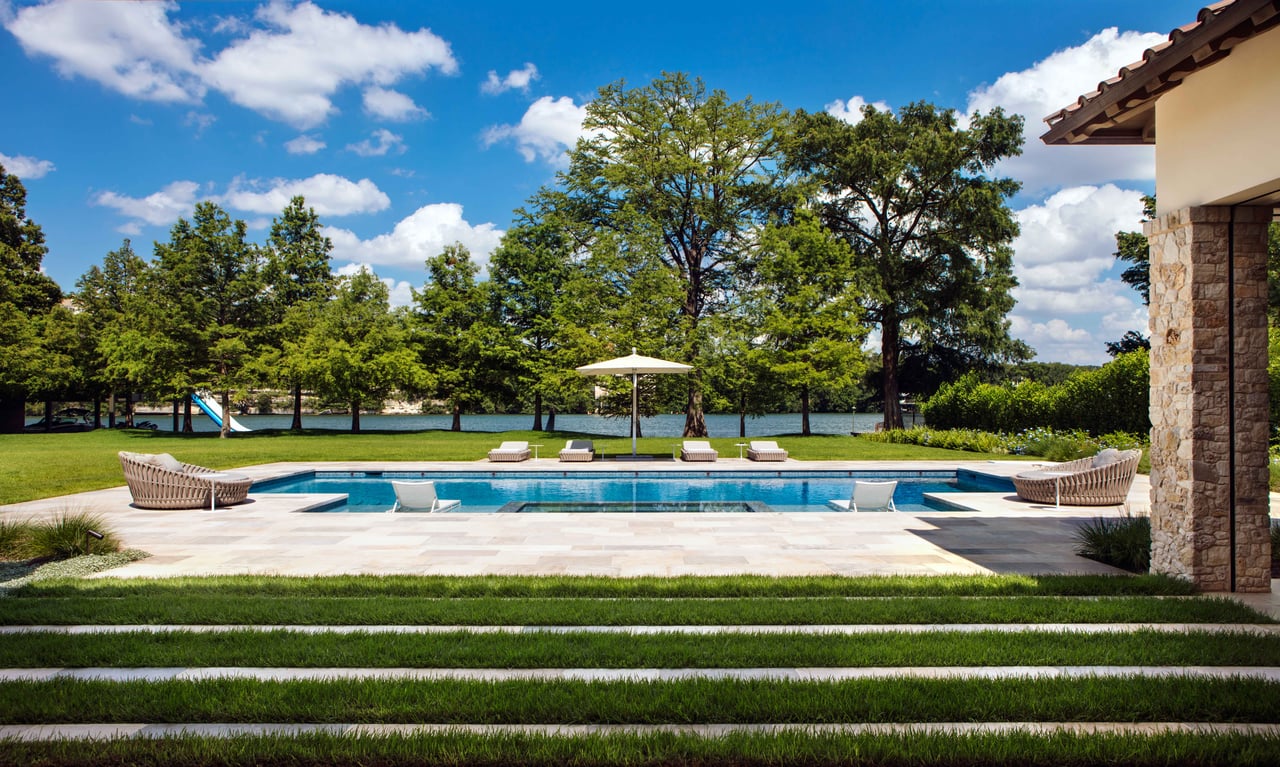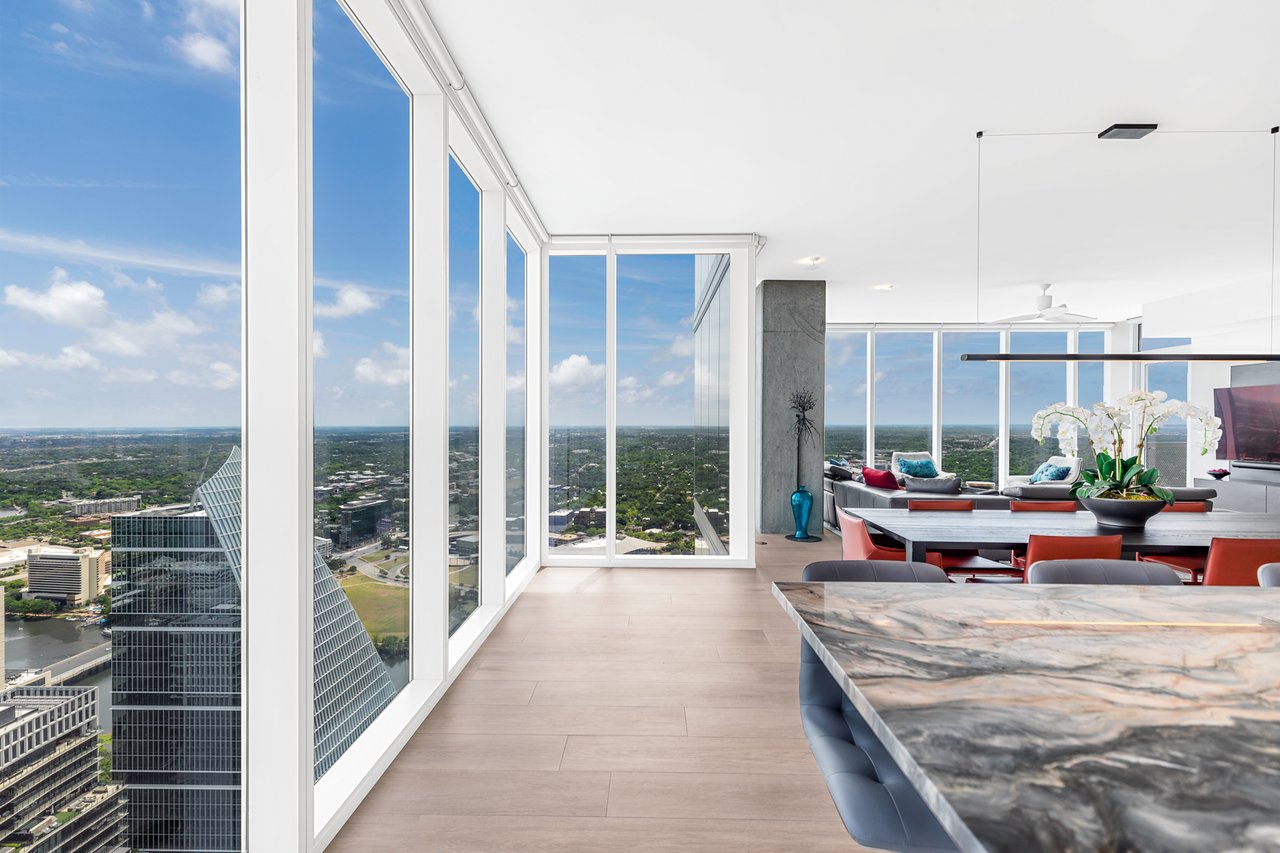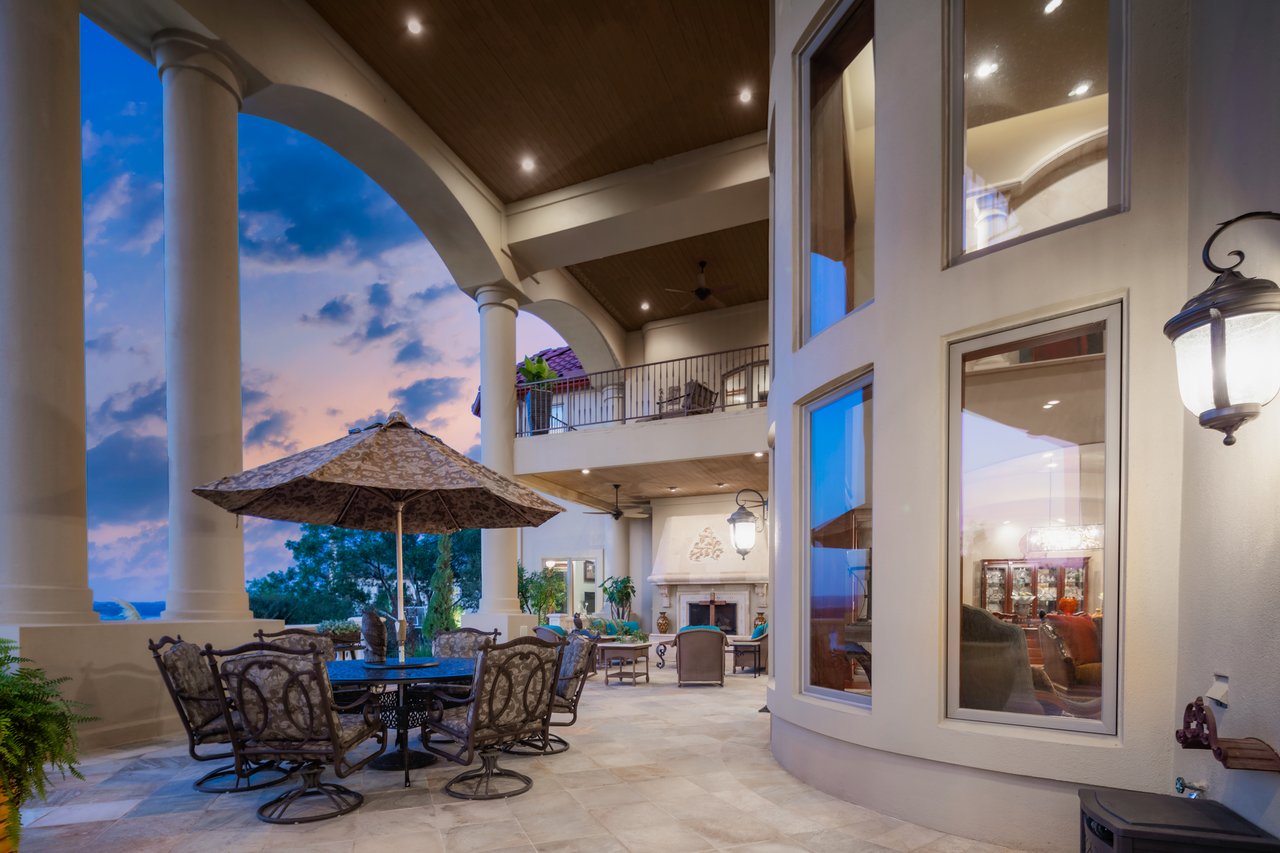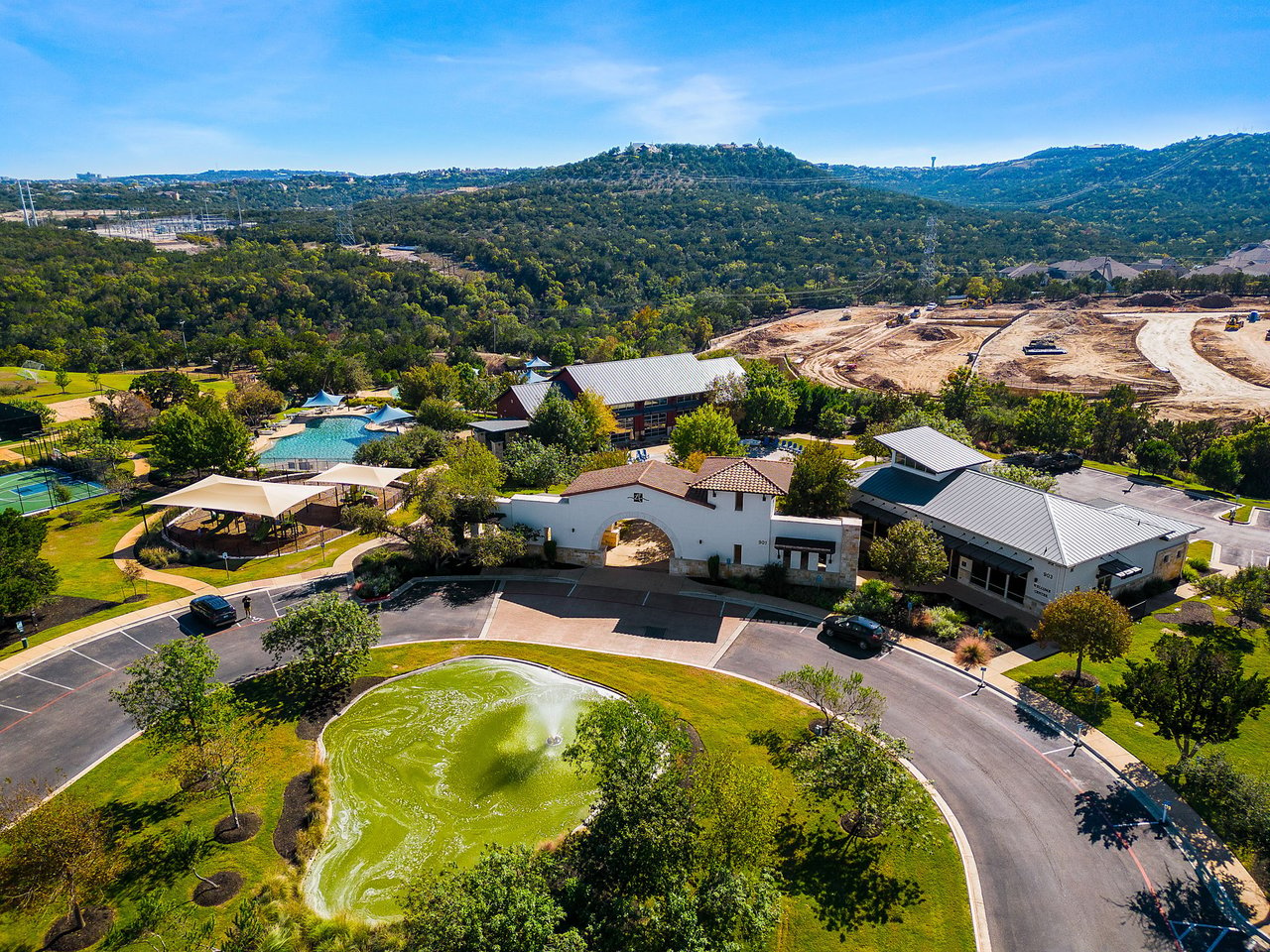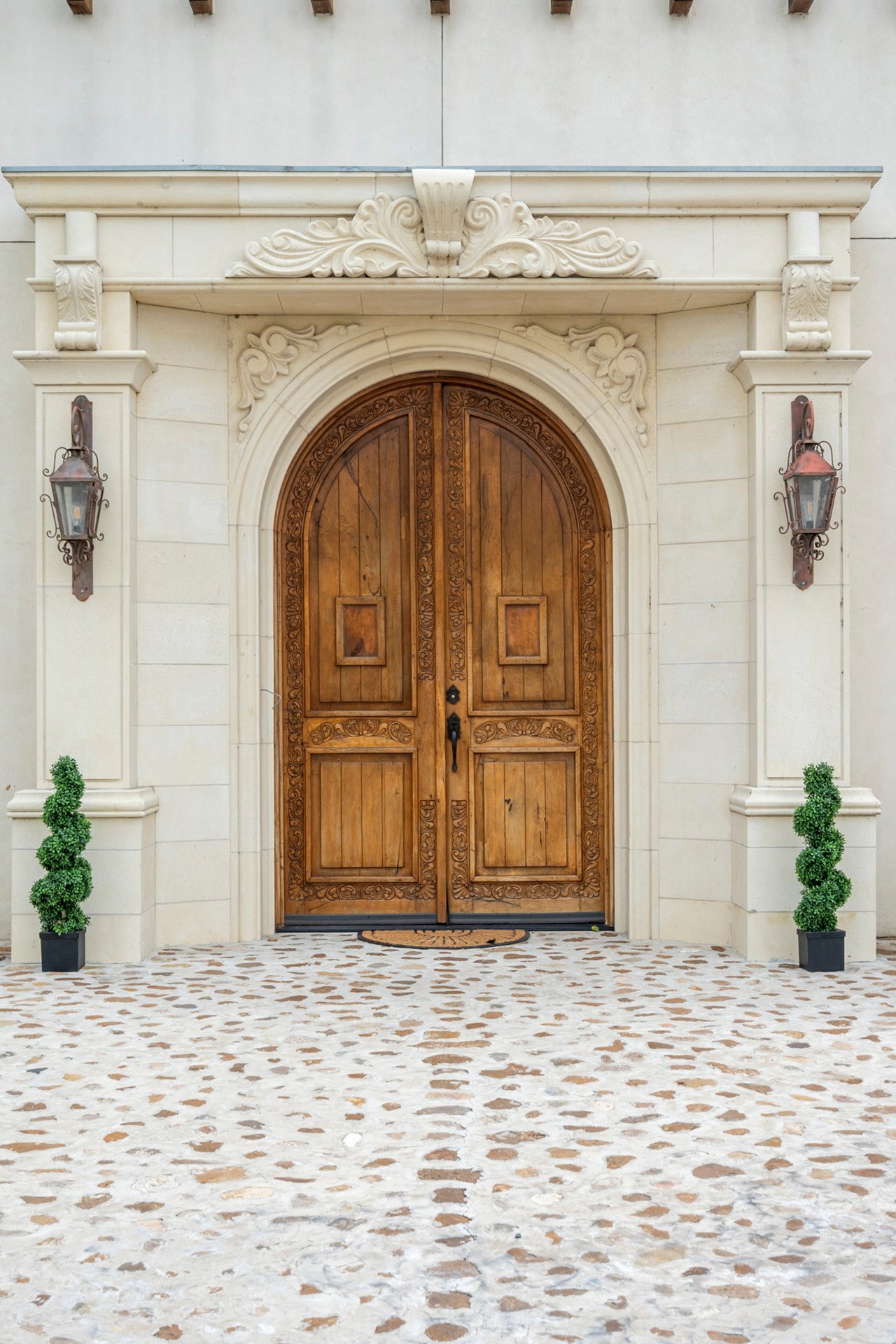 The 1,035-foot-tall Wilson Tower, set to begin construction this year, will be the tallest residential building in the US outside of New York City. Photographer: Courtesy of HKS
The 1,035-foot-tall Wilson Tower, set to begin construction this year, will be the tallest residential building in the US outside of New York City. Photographer: Courtesy of HKS
A Tech Manufacturing and Housing Boom is Bringing a Pair of Texas-sized Skyscrapers to the Lone Star State’s Capital
The city of Austin is building up, and its once-modest skyline is getting weird.
Due in 2026 is a mixed-use high-rise called Waterline, designed by the New York firm Kohn Pedersen Fox. At 1,022 feet, the building qualifies as a “supertall,” one of just a handful of these spectacular skyscrapers in the US outside Chicago or New York City. When it’s finished, the project will rank as the tallest building in Texas. Designed like a stack of several different buildings, Waterline will stand out on a skyline that’s growing up faster than almost any other nationwide.
But it won’t stand alone. Groundbreaking is due this year on an even-taller supertall, the Wilson Tower. Wrapped in a dusky golden brise-soleil running the length of the building, the Wilson Tower will rise to 1,035 feet, looming like a giant harmonica over the live music capital of the world and setting a record both for the state and for any US residential high-rise outside New York City.
Given the rate that these supertalls are popping up in Austin, no building is likely to hold a title for long.
“Just knowing about the way that the city has been very specific about the downtown core area, and where they want height and growth and density, there is a potential for others in the neighborhood,” says Brad Wilkins, Austin studio design leader for HKS, the Dallas-based designer of the Wilson Tower. “I expect we’ll keep hearing about tall towers in downtown Austin.”
The skyscrapers will stand as a string of exclamation points punctuating a decade-long-plus “Texas Miracle” of economic growth. Other Texas metros have also made huge strides, but Austin’s growth spurt stands out, thanks to a number of factors. The city’s pivot toward high-tech manufacturing — led by companies like Tesla Inc. and Samsung Electronics Co. and fueled by President Joe Biden’s embrace of industrial policy as well as generous state and local incentives — has triggered an avalanche of investment. With the Austin metro area taking point in the production of both superconductor chips and electric vehicles, demand in this famously livable city is high.
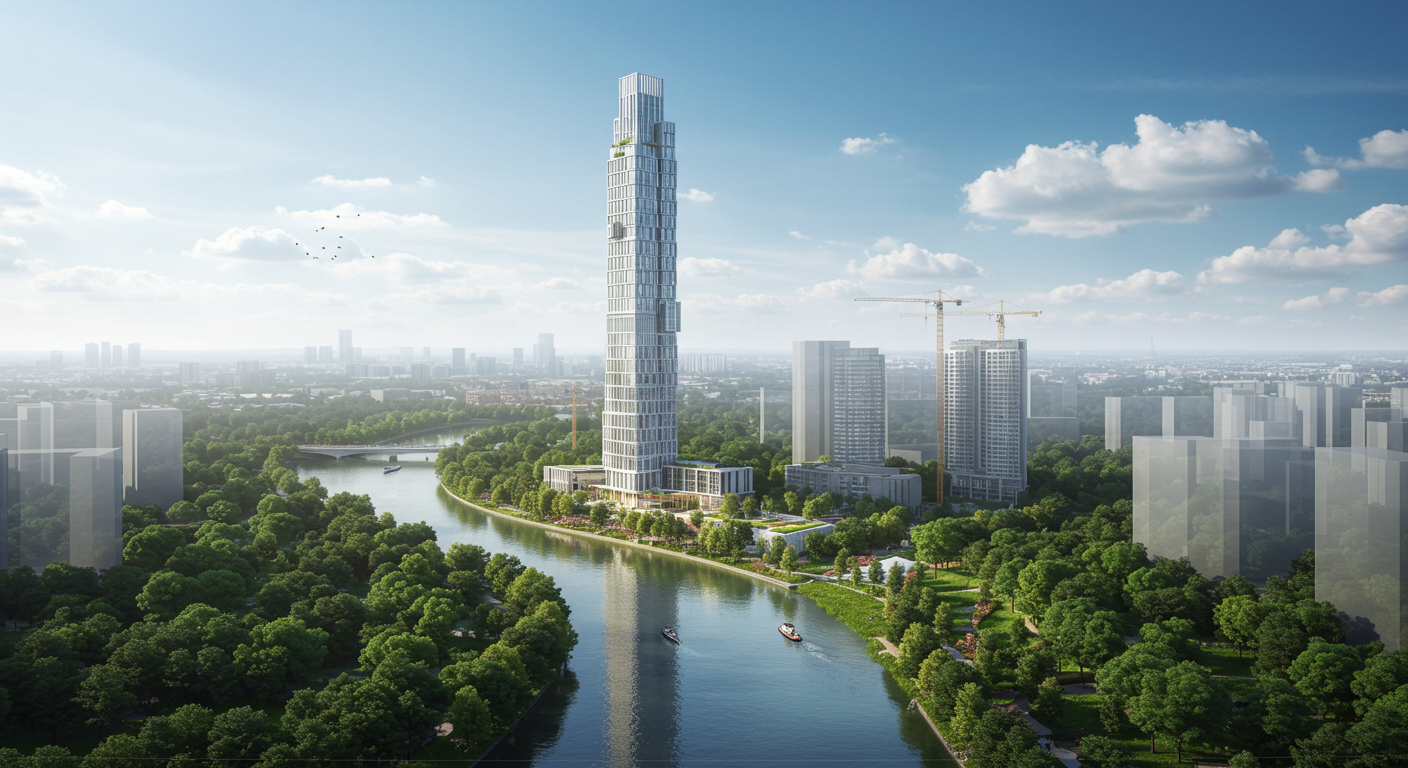 Waterline, a mixed-use tower designed by Kohn Pedersen Fox, is set to open in 2026.Courtesy of Kohn Pedersen Fox
Waterline, a mixed-use tower designed by Kohn Pedersen Fox, is set to open in 2026.Courtesy of Kohn Pedersen Fox
“Elon made it known to the rest of the world that Austin is a manufacturing center,” says Charisse Bodisch, senior vice president for economic development for the Austin Chamber of Commerce, referring to Elon Musk and the arrival of Tesla’s Gigafactory. “A lot of it had to do with the talent, looking at the future of where vehicles are going. Within the Austin region, you have a very tech-oriented employment base.”
But joining the fraternity of cities with supertalls can also be a dubious distinction: Real estate is a lagging indicator, and skyscrapers often arrive after the boom is over, looming half-empty as monuments to a bust. Others, however, are convinced that Austin’s high-rise stampede is just getting started.
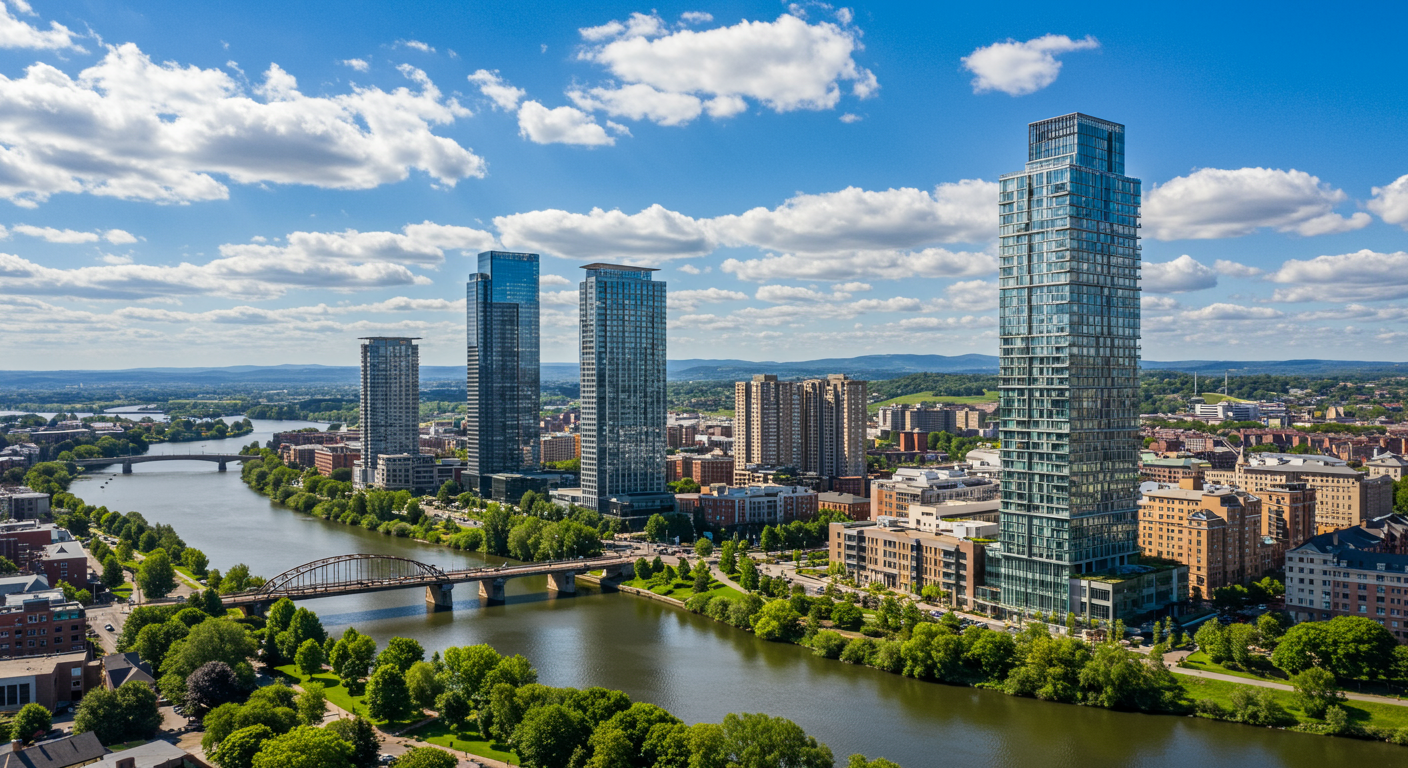 Waterline’s three uses — apartments, hotel and office space — are shown in the breaks along the building’s facade. Courtesy of Kohn Pedersen Fox
Waterline’s three uses — apartments, hotel and office space — are shown in the breaks along the building’s facade. Courtesy of Kohn Pedersen Fox
A supertall is any building more than 300 meters (about 984 feet) in height, according to the Council on Tall Buildings and Urban Habitat, the nonprofit that determines these kinds of things. The Chrysler Building was the first building in the world to reach this level, in 1930; it was joined the next year by the Empire State Building. (Those Great Depression-era twins are also the definitive illustration of the so-called skyscraper effect, or the link between tower development and economic downturn.) Only two of the roughly three dozen US supertalls can be found in Texas, both in Houston: the JPMorgan Chase Tower and Wells Fargo Plaza.
And in the Lone Star supertall rodeo, Houston’s tapped out: Due to an obscure combination of federal regulations, air traffic patterns and geography, no Houston skyscraper can be built taller than Chase’s 75 stories, as Jay R. Jordan explains in the Houston Chronicle.
 The architects aim to connect Waterline’s entrance plaza with the landscape at at the new Waller Creek urban park. Courtesy of Kohn Pedersen Fox
The architects aim to connect Waterline’s entrance plaza with the landscape at at the new Waller Creek urban park. Courtesy of Kohn Pedersen Fox
Austin faces no such restraints, and today the city is chock-a-block with flashy facades and cantilevered cubes in places that would have been unthinkable 20 years ago. Waterline, for example, will bring 74 stories of apartments, hotel and office space to the Rainey Street District, once a sleepy stretch of bungalows. Articulated breaks in the massing of the building distinguish its different uses, manifesting in blocks that appear to float over Waller Creek. This assemblage allows the architects to design floor plates with much larger dimensions for the lower office component than for the residential piece above. The project is “more of a vertical city than a singular sculpture,” according to KPF president and design principal James von Klemperer.
The architect says that the organization of the building also mitigates against its height. The break points in the buildings serve as “blow-through” zones to disrupt wind effects; these same breaks allow for strategic structural bracing systems. The fact that the building widens toward its base lends stability, von Klemperer says: “Like the Eiffel Tower or the Empire State Building, the broader the spacing of structural elements as the building meets the ground, the better.”
 The architects aim to connect Waterline’s entrance plaza with the landscape at at the new Waller Creek urban park. Courtesy of Kohn Pedersen Fox
The architects aim to connect Waterline’s entrance plaza with the landscape at at the new Waller Creek urban park. Courtesy of Kohn Pedersen Fox
Wilkins says that HKS, a Dallas-based firm whose credits include one of the most important building in Texas, didn’t set out to snatch any Texas records with the Wilson Tower. Instead, revising the design upward led to various efficiency gains throughout the building.
In fact, the Wilson Tower’s most distinctive feature — the building-spanning brise-soleil screen that will shield balconies from whipping winds and the high Texas sun — also serves to stabilize the structure. The addition means that the building doesn’t require a tuned mass damper, which is an incredibly heavy inertial counterweight added to a skyscraper to balance it during an earthquake or heavy winds. The screen, Wilkins says, “has a variety of opens and perforations that confuse the wind and harness the wind to make sure that it’s more efficient for the structure. Basically, it allows us to use less structure.”
HKS has long history working on Texas towers: The firm was one of the designers for the Frost Tower, once the tallest building in Austin. Wilkins joined the firm as a supertall expert: Previously he worked on Dubai’s Burj Khalifa, the tallest building in the world, and several other buildings that are 2,000 feet or taller. “I’ve always had a passion for them,” he says.
Some development now coming online in Austin reflects a period of tech-driven growth that may be behind us. Indeed, the not-quite-supertall Sixth and Guadalupe, which is nearing completion at 875 feet, was designed to serve as the local headquarters for Meta, but the Facebook and Instagram parent company — which announced 11,000 layoffs in November — won’t be moving into the building after all.
Yet business leaders in Austin point to a generational shift in tech toward manufacturing as reason to believe that the city’s economic foundation is strong, and demand for apartments, condos and even office space will remain high. Jobs in this sector require a wide spectrum of educational attainment, from blue collar to Ph.D., and can support demand for downtown living. Given the city’s emerging significance as a next-gen manufacturing hub — and Biden’s emphasis on shoring up the US supply chain via legislation like the CHIPS Act, which aims to boost domestic semiconductor production — this building boom could defy the skyscraper effect.
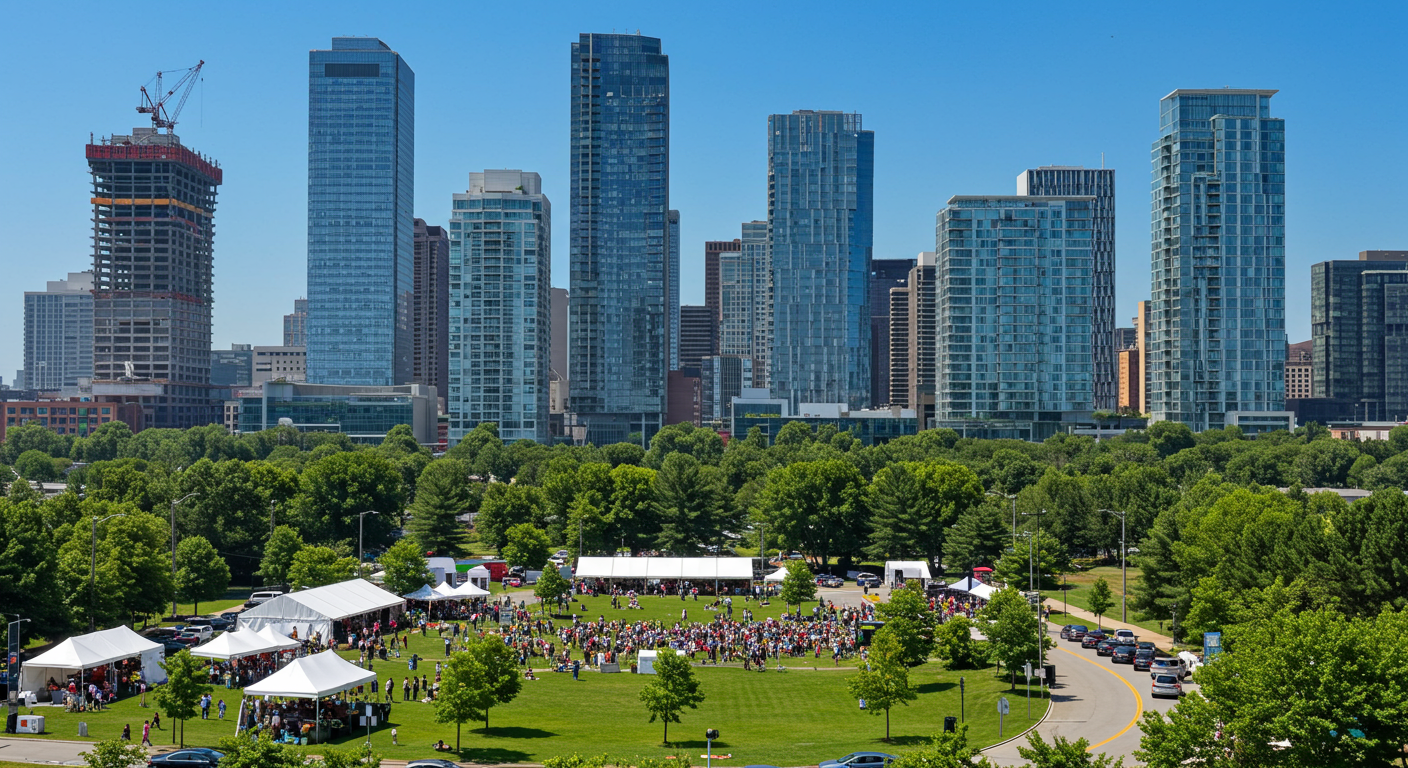 A rendering of the Wilson Tower shows, in the foreground, the Frost Bank Tower, another HKS project and one that transformed Austin’s skyline 20 years ago. Courtesy of HKS
A rendering of the Wilson Tower shows, in the foreground, the Frost Bank Tower, another HKS project and one that transformed Austin’s skyline 20 years ago. Courtesy of HKS
Samsung, for example, plans to open a $17 billion semiconductor plant in Taylor, just outside Austin, which will be the company’s largest investment in the US to date. On top of Texas’ low taxes and Austin’s high quality of living, state and local incentives to lure Samsung (and others) to the area add up to hundreds of millions of dollars in tax breaks.
That’s only the tip of the iceberg: Samsung is mulling opening 11 manufacturing plants in Austin and Taylor over the next two decades, a mammoth investment of early $200 billion that would bring some 10,000 jobs to Central Texas. Another superconductor manufacturer, Infineon Technologies, is weighing a $700 million expansion of its Austin plant.
Knock-on investments are no less significant to Austin’s future. CelLink Corp., a California-based manufacturer of circuits for solar panels and electric vehicles, announced that it was opening a plant in Georgetown, just north of Austin, that will hire some 2,000 workers, making it one of the suburb’s largest employers.
“We’re seeing significant demand from the suppliers of these companies, Tesla and Samsung,” Bodisch says. “These EVs especially use semiconductors. It’s all tied together.”
Austin established its bona fides as a manufacturing center before the most recent tech boom, Bodisch points out: The existing Samsung and Infineon plants in Austin date back to the 1990s, when the city earned the nickname “Silicon Hills.” Now the city’s economic fortunes are again looking up — and its skyline will soon reflect that.


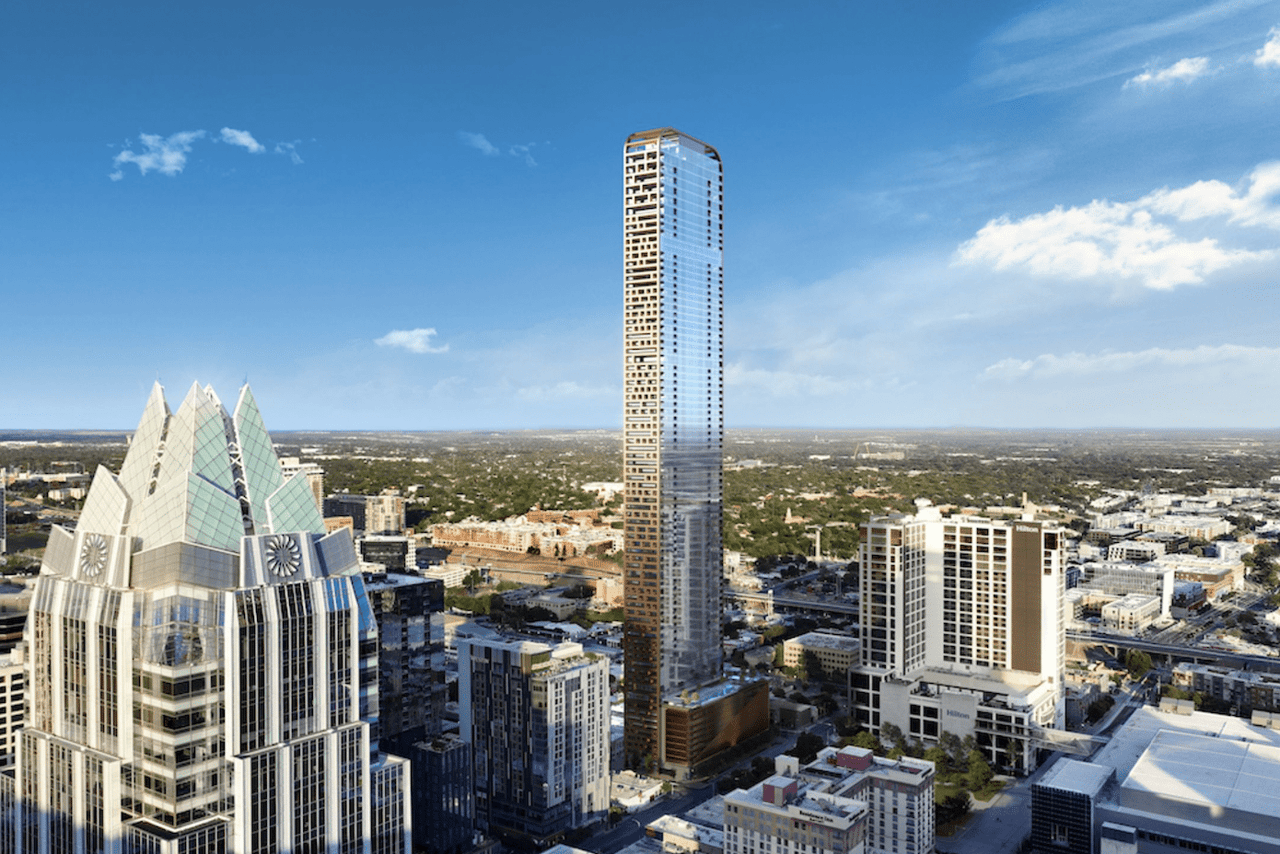
 The 1,035-foot-tall Wilson Tower, set to begin construction this year, will be the tallest residential building in the US outside of New York City. Photographer: Courtesy of HKS
The 1,035-foot-tall Wilson Tower, set to begin construction this year, will be the tallest residential building in the US outside of New York City. Photographer: Courtesy of HKS
 Waterline’s three uses — apartments, hotel and office space — are shown in the breaks along the building’s facade. Courtesy of Kohn Pedersen Fox
Waterline’s three uses — apartments, hotel and office space — are shown in the breaks along the building’s facade. Courtesy of Kohn Pedersen Fox The architects aim to connect Waterline’s entrance plaza with the landscape at at the new Waller Creek urban park. Courtesy of Kohn Pedersen Fox
The architects aim to connect Waterline’s entrance plaza with the landscape at at the new Waller Creek urban park. Courtesy of Kohn Pedersen Fox The architects aim to connect Waterline’s entrance plaza with the landscape at at the new Waller Creek urban park. Courtesy of Kohn Pedersen Fox
The architects aim to connect Waterline’s entrance plaza with the landscape at at the new Waller Creek urban park. Courtesy of Kohn Pedersen Fox A rendering of the Wilson Tower shows, in the foreground, the Frost Bank Tower, another HKS project and one that transformed Austin’s skyline 20 years ago. Courtesy of HKS
A rendering of the Wilson Tower shows, in the foreground, the Frost Bank Tower, another HKS project and one that transformed Austin’s skyline 20 years ago. Courtesy of HKS
